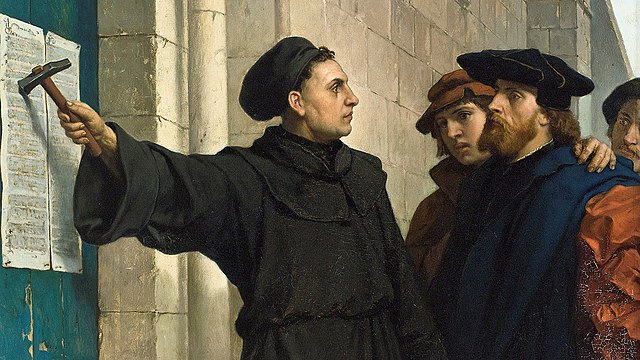
UNIT II. THE RESHAPING OF EUROPE: HEALTH, IDEOLOGY, DEMOGRAPHY, RELIGION, AND POLITICS
Innovation through Collapse (Black Plague and Medieval Europe); Reformation
|
Sept. 5 |
Trauma, Disease, and the Shaking into a Modern World Consideration of Medieval Europe, the Black Plague, and its impact on ideas, mentalities, and institutions in Europe. Assignment: Read the collection of primary sources on blackboard (in the assignments section in the category of “Middle Ages and Plague!”) about the Black Plague in medieval Europe. Some are also accessible here: Rogers, Perry McAdow. “Excerpts on the Plague: In Aspects of Western Civilization: Problems and Sources in History, 7th ed., 353-365. Boston: Prentice Hall, 2010. . Also consider the following links about mass graves during Covid and efforts to create community in Siena in times of Covid. If you can print out the readings or use an editing function on your digital device, mark the portions of these readings that seem most interesting to you to discuss in our meeting. Do you see any modern parallels to (1) the unfolding of the plague (2) how people responded to it and (3) how people explained it? (4) How did the plague seem to impact society? How does our understanding of a recent pandemic benefit from considerations of pandemics of the past? What are relationships between epidemics and social change? Do massive events (like plague) bring people together or tear them apart? Or both? |
|
Sept. 7
|
The Reformation and the Thirty Years War: Religion, Politics, Scientific, and Cultural Rupture This class will continue to consider life in Europe again, evaluating how the experience of the Plague impacted the ways that residents of Europe viewed/reacted to their own religious/political traditions. We will consider the protests of Martin Luther against the Church, the impact of technology on the dissemination of his message, and the relationship between religious reform and political change in Europe. Assignment: Read in OER Textbook chapter 5.1 (pp. 157–163); and primary source of Martin Luther’s 95 Theses; Also read primary Sources via internet links: Déscartes: Meditations II.1-16 Indictment of Galileo (1633)
In preparing for class, consider main themes in Martin Luther’s critiques and whether technological and ideological change go hand in hand? Perhaps try to think of examples in the modern world in which technology, social, and religious change are linked? Come to class prepared to work collaboratively. In this class we will also consider whether there is a relationship between the process described as the ‘Scientific Revolution’ and the Protestant Reformation. We will consider how and why the Catholic Church reacted as it did (and precisely when it did) to new ideas. When preparing your assignment, try to identify what seems distinctive about Luther and Décartes’ approach, and why the Catholic Church was agitated about Galileo and his actions. Do interfaces between power, religion, and science echo anything you notice about the modern world?
|
 Pauwels, Ferdinand. Luther Hammers His 95 Theses to the Door. 1872. Oil on canvas, height: 85 cm (33.4 in); width: 72 cm (28.3 in). Eisenach, Wartburg-Stiftung.
Pauwels, Ferdinand. Luther Hammers His 95 Theses to the Door. 1872. Oil on canvas, height: 85 cm (33.4 in); width: 72 cm (28.3 in). Eisenach, Wartburg-Stiftung.
|
|